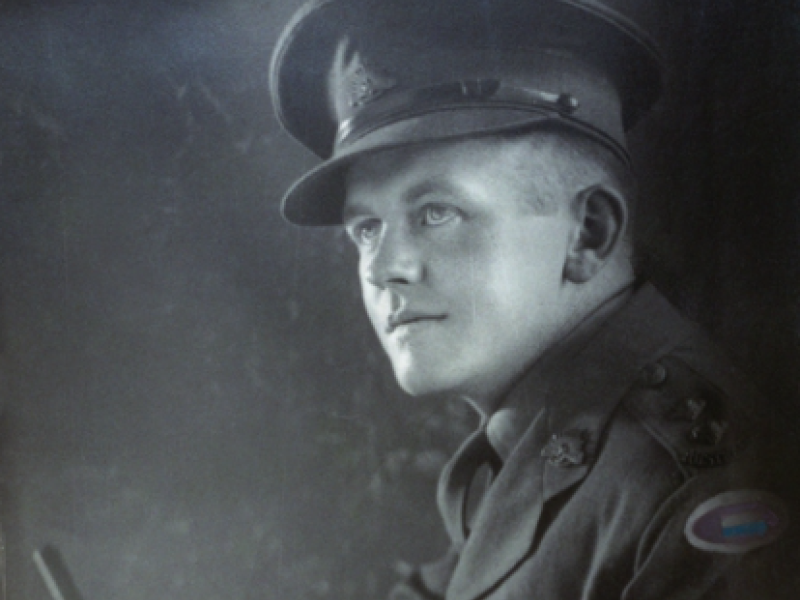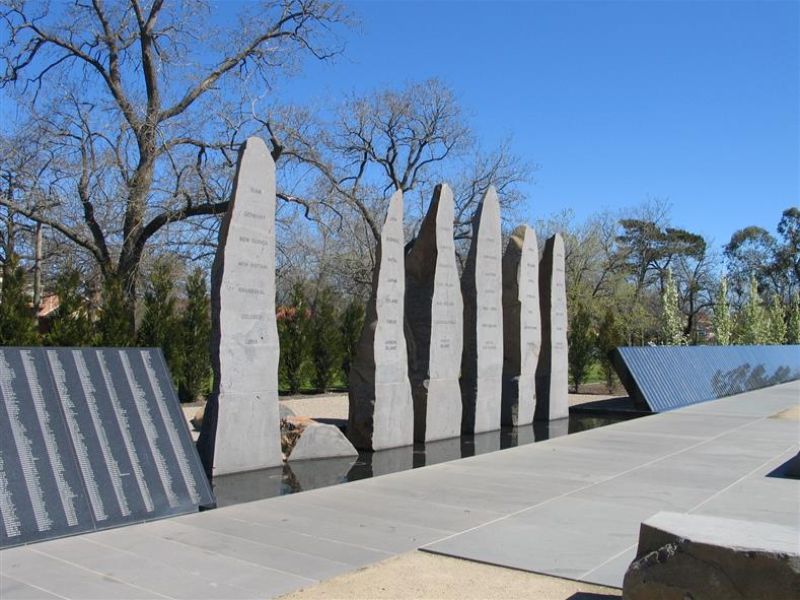Lieutenant (Lt) Roderick Graham Wells, 8th Division Signals
Roderick Graham Wells was born in Tatura, Victoria, Australia, 1 January 1920.
He joined the Army in early 1940, and was commissioned on 1 November 1940 and posted to 8th Division Signals.
In 1941, Lt Wells' unit was posted to Malaya. His first duties were associated with high frequency radio sets fitted to Army vehicles.
Later during the Malaya campaign, Wells worked in radio detection operations searching for clandestine radios sending messages to the Japanese.
After the fall of Singapore in February 1942, Wells sent to Changi. On 7 July 1942, along with 1,494 other B Force POWs, he left Singapore on the Japanese ship Ubi Maru, arriving in Sandakan Harbour on 18 July 1942.
At Sandakan, Wells became active in a clandestine underground network with some of the other officers, including Captain Lionel Matthews. Using local Chinese contacts to collect parts, Wells built a radio receiver and transmitter.
However, the Japanese secret service, the Kempei Tai, had received information about the underground activity and conducted a major search of the camp. A list of radio parts was discovered. The list was linked to Wells and when confronted by Captain Hoshijima, he eventually led the Kempei Tai to the transmitter, leaving the receiver in its hiding place.
Wells was immediately arrested, paraded to the camp and transported to Kempei Tai headquarters and eventually to Kuching, where he was joined by others arrested for their part in the Sandakan underground.
Wells was brutally tortured as the Japanese tried unsuccessfully to extract information.
In February 1944, all the accused were tried by court martial and found guilty. On 28 February 1944, Lt Wells and Capt Matthews were both sentenced to death.
Headquarters at Kuching sent a signal to the Japanese command in Saigon requesting permission to execute two Australian officers. The reply from Saigon only authorised one execution; after the war it was discovered that this was a simple typographical error in Saigon.
Both men were brought before the court again on 29 February 1944. Matthews' death sentence was confirmed and he was shot that day.
As the court did not have the authority to execute Wells, he was sentenced to 12 years penal servitude in solitary confinement. Wells was nailed into a crate, loaded into the hold of a ship and transferred to the infamous Outram Road Jail in Singapore.
He was finally released in August 1945 having endured 21 months of brutal and cruel treatment from his Kempei Tai jailers, surviving what was probably the longest period of solitary confinement of any allied POW.
Lt Wells was one of only a handful to survive the Sandakan POW Camp.
After the war, he studied at Melbourne University, graduating with a BSc and Dip Ed. In 1951, he was again commissioned into the Army, rising to the rank of Lieutenant Colonel, before resigning in 1960 to work in communications and engineering in the Australian Public Service. He died in 2003, aged 83 years.
- Australian War Memorial https://www.awm.gov.au/collection/C995208

 Australian War Memorial
Australian War Memorial